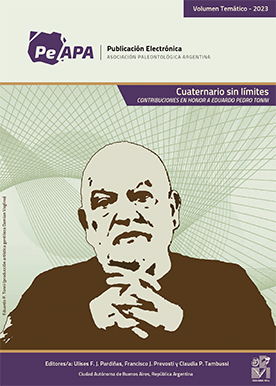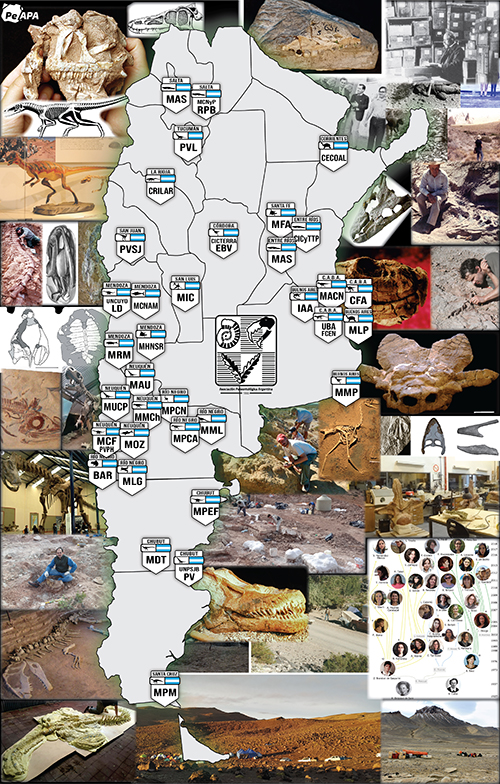THE K-T AND TERTIARY-PLEISTOCENE SOUTH AMERICAN MAMMALIAN TURNOVERS: SIMILAR PHENOMENA?
Abstract
The history of South American mammals has been episodic, apparently "stratified", and the "strata" relatively few in number and, as a rule, sharply and clearly separable. This is a consequence of the physical history of the continent. The fossil record shows that there were two great episodes characterized by drastic turnovers of mammal communities; both appear related to two of the most drastic physical changes withstood by the continent. The oldest episode is related to the separation of Africa from the other Gondwanan continents (shaping the primordial outlines of the eastern coast of the incipient Southern Atlantic Ocean), and to a sporadic connection of the South American plate with the North American plate. This led to the first great turnover: with the exception of two Gondwanan taxa (Monotremes and Gondwanatheres), and probably another one (Dryolestida), all the Gondwanan mammals (all non-tribosphenic taxa) became extinct, and were "replaced" by Laurasian tribosphenic marsupial and placental immigrants. Because of the early extinction (early Paleocene) of the Gondwanan non-tribosphenic survivors, and the subsequent isolation of the continent (including, at least, the Antarctic Peninsula) unique communities solely composed of quite endemic (native) marsupials and placentals were built up. As a consequence of the inter-American connection via the newborn Central America, an increasing biotic interchange began. The second great turnover, involving dispersal, extinction and survival, built up quite peculiar mammalian communities. These are the new basic mammal communities that, after the "Megafaunal Extinction" and the addition of a few and selected immigrants, distinguish the present Neotropical Region. Apparently this second great turnover was accomplished by replacement, not by displacement, as long thought. The failure to find mammals in rocks representing the K-T transition, has no record to analyze the modus operandi of the transcendental first turnover.
KEY WORDS. South American land-mammals. K-T. Tertiary-Pleistocene. Dispersal. Turnover. Extinction. Survival.
Downloads
Published
Issue
Section
License

Authors retain copyright and grant the journal right of first publication with the work simultaneously licensed under a CC Attribution-NonCommercial 4.0 that allows others to share the work with an acknowledgement of the work's authorship and initial publication in this journal.






















